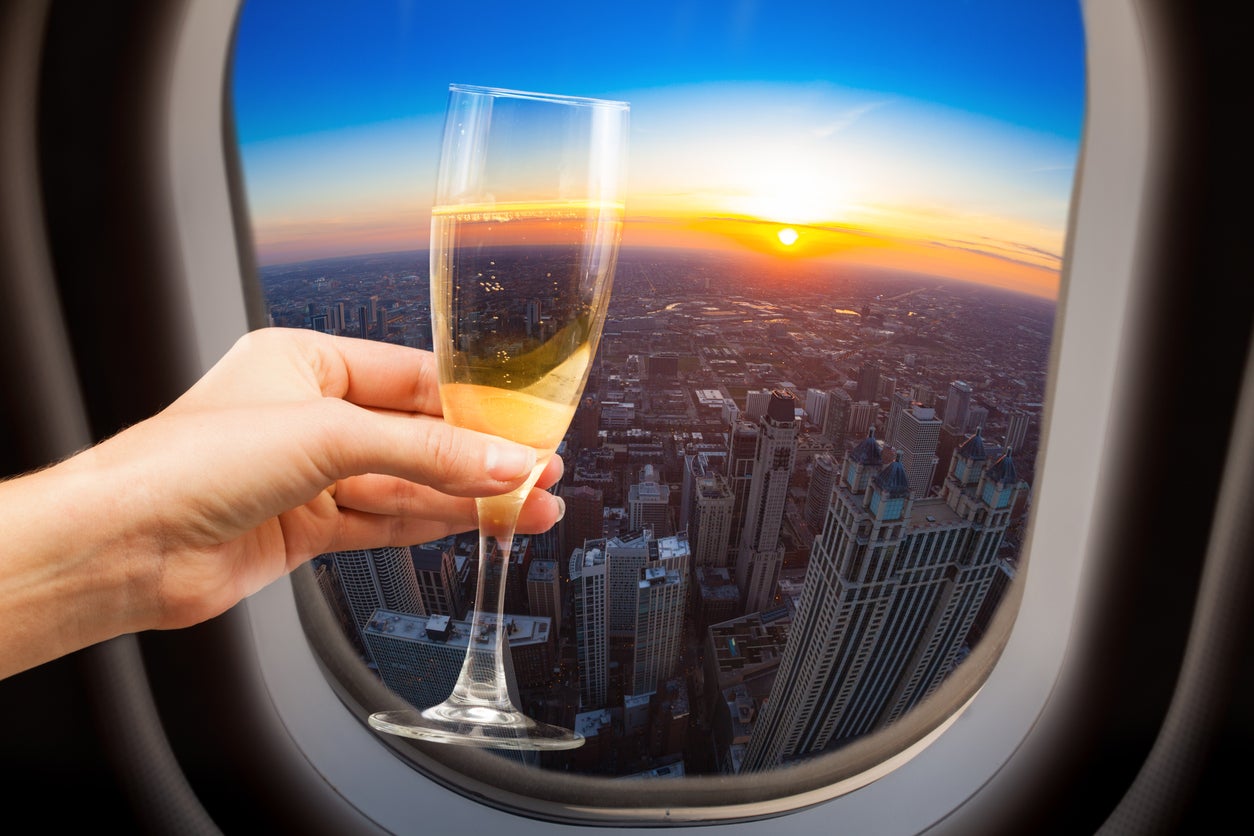I’m a travel journalist and I used to be a problem flyer – now I’m a problem drinker
Despite jetting around the world for her job, Annabel Fenwick Elliott is terrified of turbulence and has tried everything – from therapy to apps for fearful flyers – to take the edge off. The only thing that works? Getting ‘quietly hammered’

It never occurred to me that my fear of flying and my alcohol consumption might be related until I was asked to write this article.
Indeed, if I cast my mind back to my earliest days of reckless alcohol consumption (chugging Smirnoff Ice in the park after GCSE exams doesn’t count because everyone was doing that), it was wine from a plastic cup on planes that started it all, my teenaged attempt to alleviate my terror of turbulence.
I’m not saying it’s good advice, but it did work. I don’t have ‘aviophobia’ anymore. Better still – and this is handy, given I’m a travel journalist and therefore spend a lot of time in the air – I would go as far as to say I get a thrill these days when the cabin shakes. Probably because I’m always drunk (it is still my rule, at the age of 36, to never, ever fly sober, not even on a 7am intercontinental hop) and booze, for me at least, makes things that are usually serious or scary, feel funny and interesting.
Over the years, I assumed that I’d naturally outgrow my once intense fear of dying in a plane crash. It was only fairly recently when I was forced to fly dry for the first time as an adult (and only because I was pregnant) that I noticed my palms had broken into a sweat at the first ‘bing bong’ of the fasten seatbelts sign. The body remembers. I was en-route to Australia with my husband when the panic set in, and much to his concern for the wellbeing of our unborn child, my first instinct was to order a glass of fizz (the bubbles make it hit faster). Calm down everyone, I only had one.
Now that I’m a mother, I no longer have the luxury of being a problem drinker. I’ve had therapy to better cope with my various demons, take medication to control my ADHD, and beta blockers if I have to do any public speaking. I never drink at home alone; only in social settings – which are rare, given I have a toddler. But at 35,000 feet? I doubt I will ever kick that habit.
Ridiculous problems call for equally silly solutions. Sensible fears (of commitment, boredom or giving speeches, for example) are rooted in logic or past trauma and are best tackled with professional help. Lizard brain terrors (such as of heights, spiders or in-flight calamities) are often immune to reason. It doesn’t matter that, according to Harvard University research, my odds of dying in a plane crash are just one in 11 million, compared to the much more likely one-in-5,000 chance of a fatal car accident. And no, modern apps like Turbulence Forecast, which aim to educate and prepare nervous flyers, are far too cerebral to dismantle such an irrational worry.
Read more on Travel advice:
I suspect I’m not alone in my recourse to booze. Whether because flying is cramped, unpleasant or downright terrifying, a plane’s fuselage (and the airport pubs that precede it) remain the only socially acceptable scenario in which to get quietly hammered on your own at any time of day. Booze might be banned on the London Underground but there would be mutiny if it was prohibited on a national airline.
I say ‘quietly hammered’ because this aspect is important. My goal when I guzzle on board – and I wish all passengers shared this – is not to have fun or worse, to get chatty. It is to be calm and sleepy in the best case scenario, or sufficiently lubricated for my impending death, should we end up in a nosedive towards the ocean. The latter may not be statistically likely, but neither is the prospect of my giving up this highly effective adolescent coping mechanism. If you are an aviophobic who hasn’t tried it yet (and you promise to behave yourself under the influence), it might just be worth a shot.
Subscribe to Independent Premium to bookmark this article
Want to bookmark your favourite articles and stories to read or reference later? Start your Independent Premium subscription today.

Join our commenting forum
Join thought-provoking conversations, follow other Independent readers and see their replies